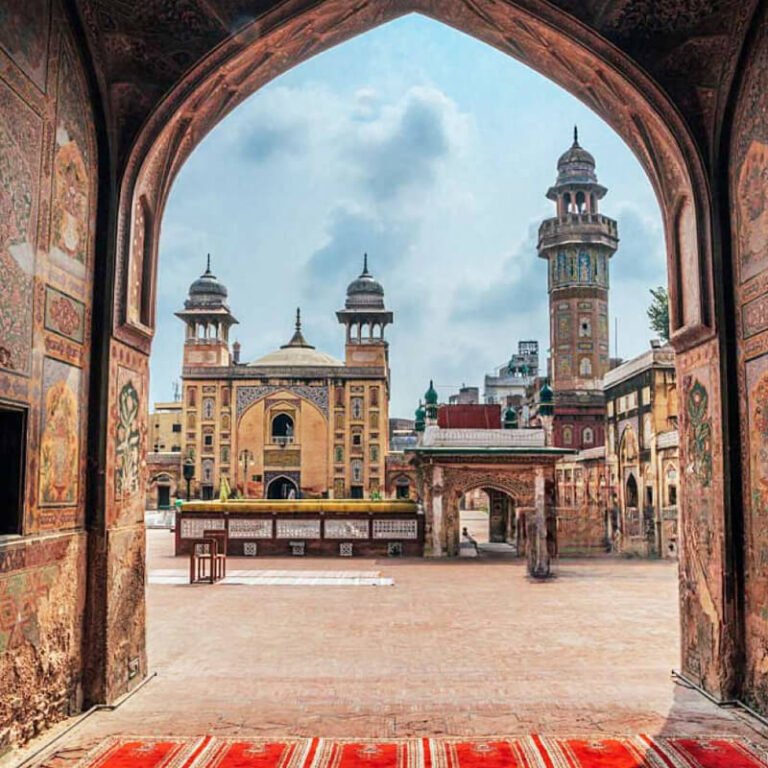Table of Contents
Lahore isn’t just a city but it’s full of life, stories, and energy. Every corner has something to offer. Whether it’s your first visit or you’ve been here before, there’s always something new to see.
In this guide, I’ll share some of the top tourist attractions in Lahore — places that truly show what this city is all about. Let’s dive in.
Here’s The Best Top Tourist Attractions in Lahore
Wazir Khan Mosque:
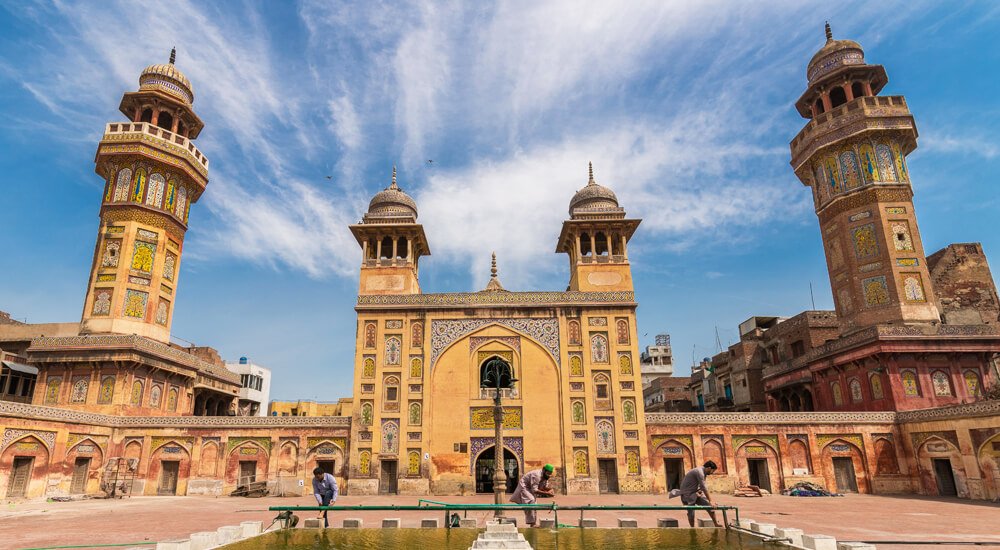
Wazir Khan Mosque is a historic example of Mughal architecture located in the Walled City of Lahore. It was built in the 17th century during the era of Emperor Shah Jahan.
The beautiful mosque is renowned for its intricate tile work and vibrant architectural design. The interior walls and ceiling are adorned with Quranic calligraphy and floral patterns.
The mosque is a significant cultural and religious landmark, as well as a historical attraction for visitors.
Shahi Hamam:
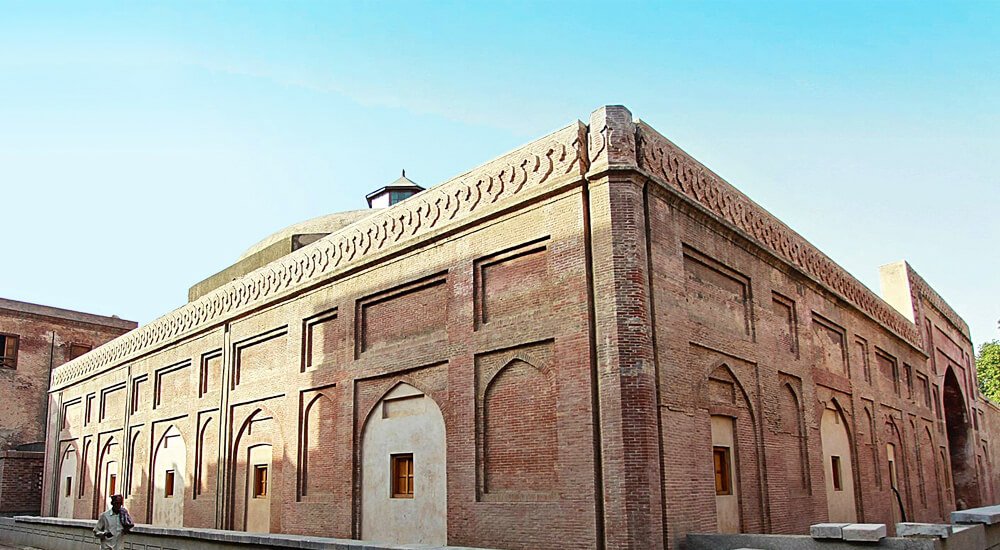
Shahi Hamam is a historic Mughal-era bathhouse, also known as Shahi Hamam, located in the Walled City of Lahore. It was built in 1653 by Hakim Ilmuddin Ansari during the reign of Emperor Shah Jahan.
The structure features beautiful frescoes, ornate ceilings, and an advanced water and heating system that represents the engineering skills of the Mughals.
Shalimar Gardens:

Shalimar Gardens is located in Lahore near Baghbanpura. It was built in 1641 by Emperor Shah Jahan. It features terraced levels, flowing water channels, and intricate fountains that highlight the Mughal love for symmetry and nature.
These gardens are a popular tourist attraction, representing the architectural and cultural brilliance of the Mughal civilization.
Lahore Fort:
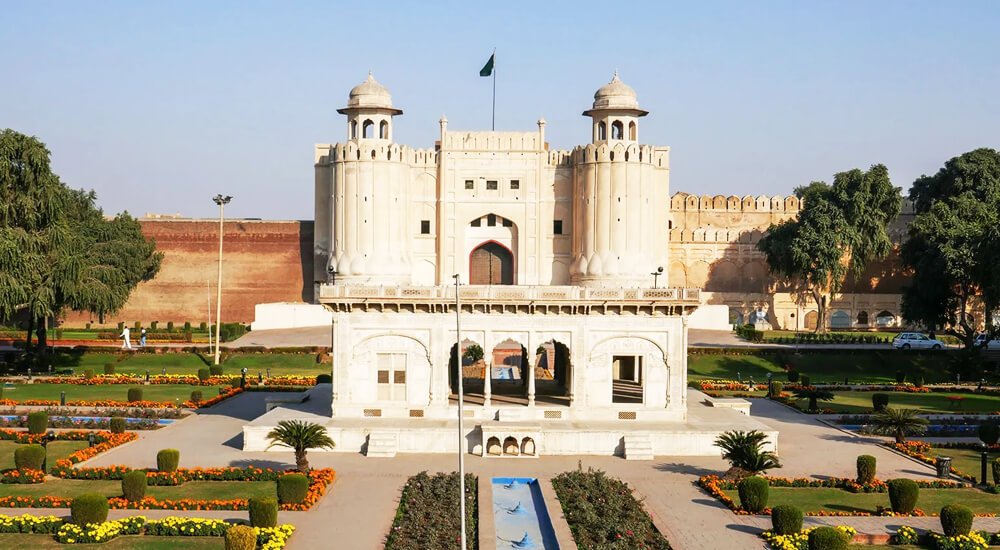
Lahore Fort holds iconic historical significance for the city’s past. Also known as Shahi Qila, it is located in the heart of Lahore.
Although the fort has ancient origins, it was extensively rebuilt and expanded by Mughal emperors, especially Akbar, Jahangir, and Shah Jahan. It features stunning palaces, halls, and gardens that reflect Mughal architecture.
As a UNESCO World Heritage Site, Lahore Fort showcases the cultural and historical legacy of the Mughal Empire.
Badshahi Mosque:
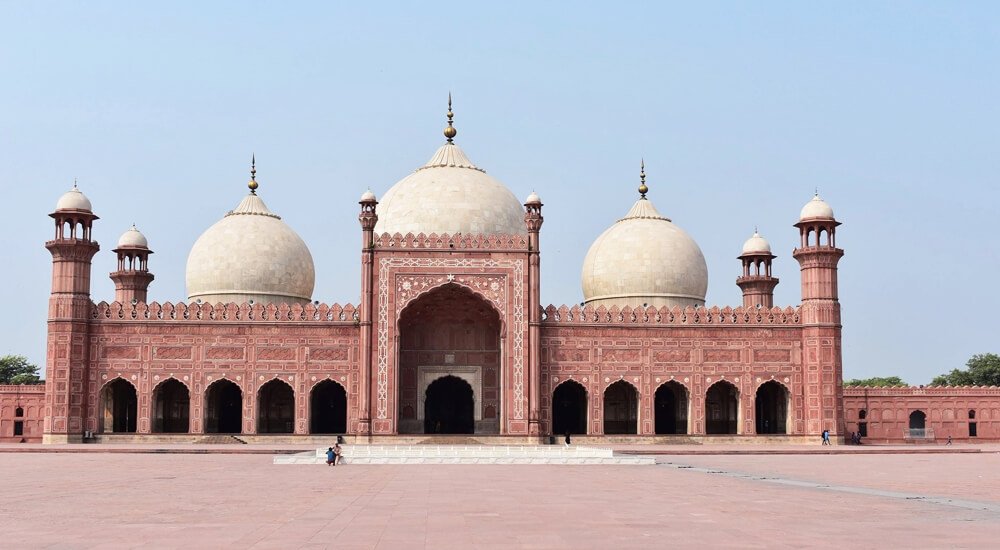
The beautiful, ancient, and historic Badshahi Mosque was built during the Mughal era. The structure of this magnificent mosque is adorned with colossal domes, intricate marble inlays, and expansive courtyards.
The breathtaking serenity and historical significance of the mosque make it a popular destination for those who wish to immerse themselves in the spiritual and cultural facets of Lahore.
Walled City of Lahore:
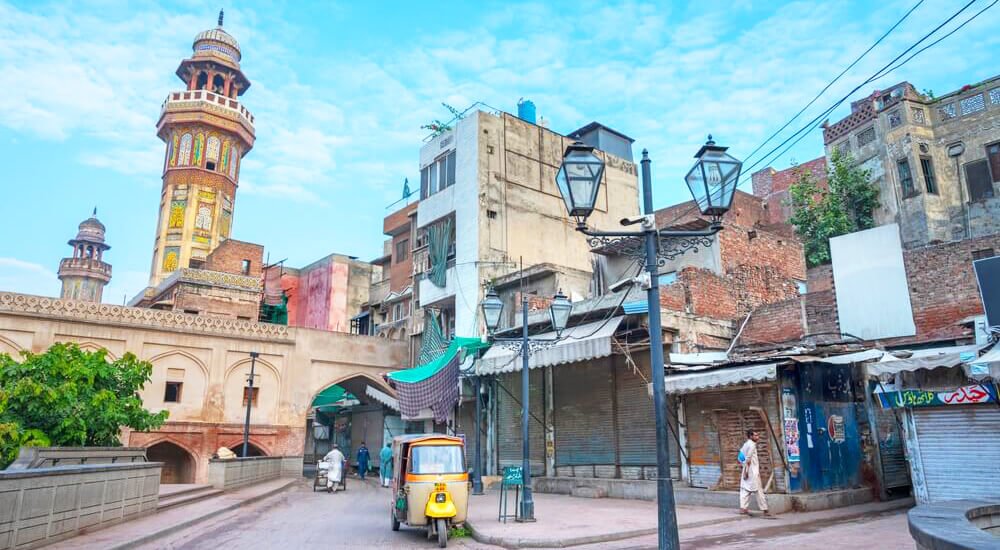
The Walled City of Lahore is valuable to Lahore’s history and culture. It features old walls, tiny houses, busy markets, historical mosques, and lovely streets.
Visitors can explore historic landmarks that show Mughal, Sikh, and British architecture. The lively atmosphere around Dehli Gate and the ancient Wazir Khan Mosque provide an excellent experience for those looking for authentic things to do in Lahore.
Minar-e-Pakistan:
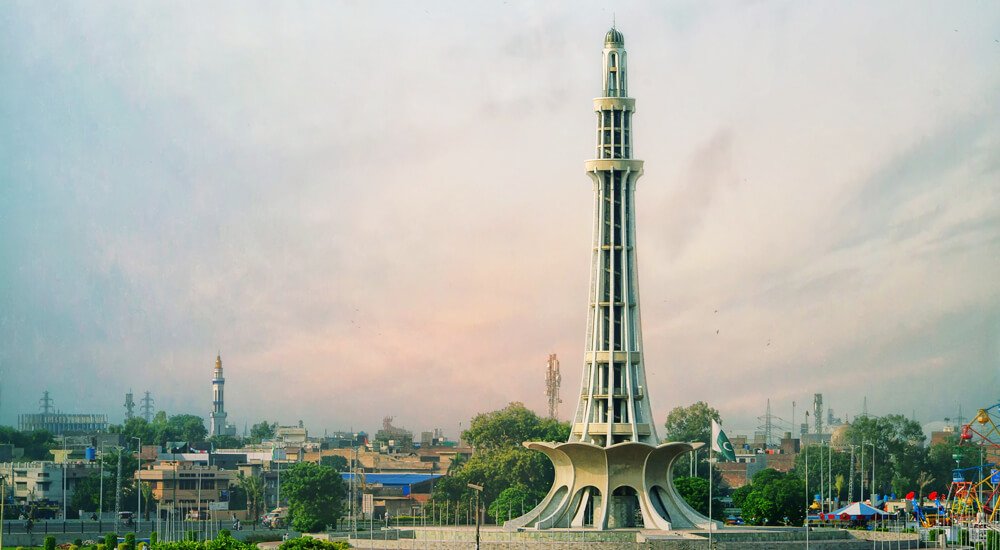
Minar-e-Pakistan holds significant importance because it represents Pakistan’s independence. It shows the Lahore resolution of 1940, a step toward independence.
From the top of this monument, you can enjoy the beautiful views of Lahore. This structure symbolizes the unity and strength of the nation and highlights the struggle for freedom.
Lahore Museum:
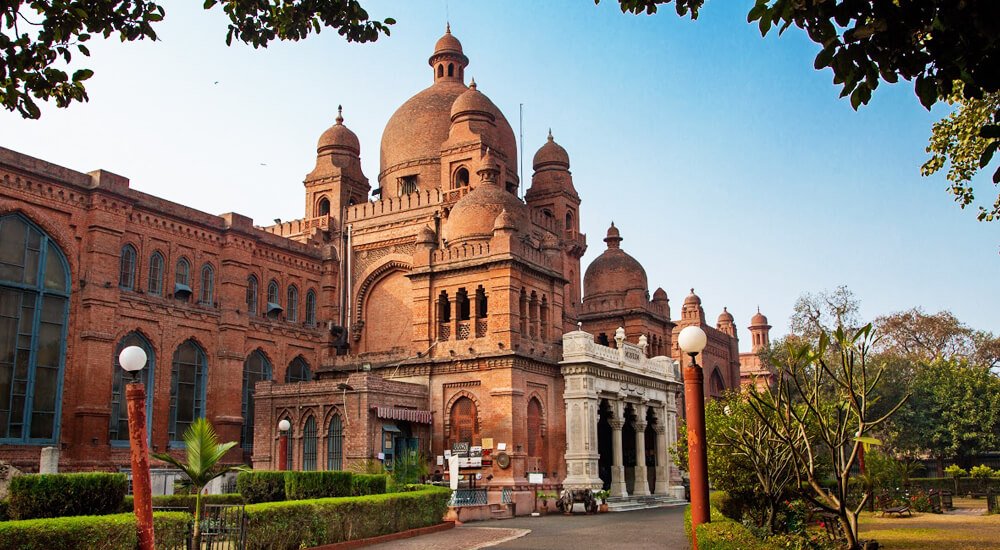
Lahore Museum is a cultural treasure trove that offers a collection of ancient artifacts, manuscripts, artworks, and cultural heritage of Pakistan, from the ancient relics of Mughal Era paintings and Gandhara sculptures that represent the tales of past eras.
Visiting the Lahore Museum is an impressive experience that offers a deeper appreciation of Lahore city’s diverse culture aDnd historical importance.
Delhi Gate:
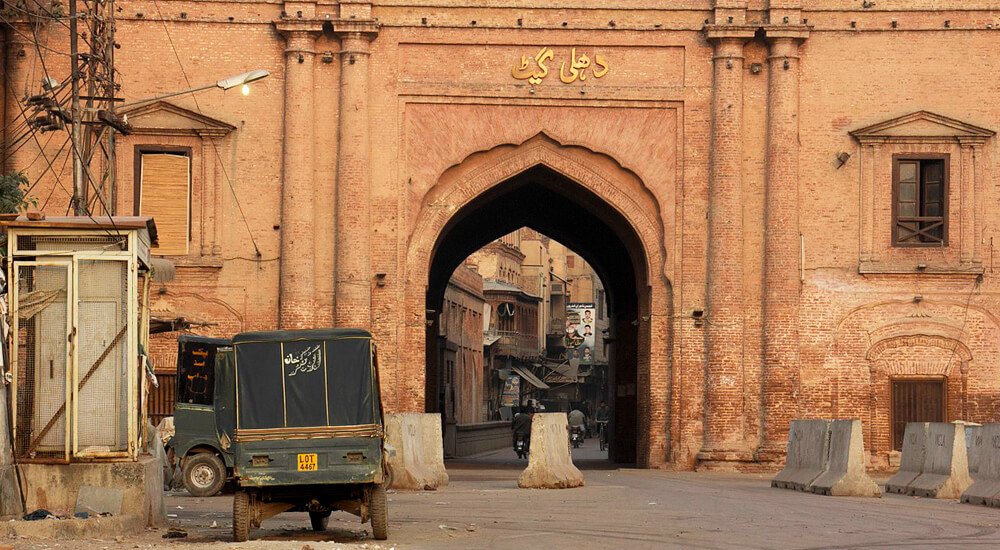
Delhi Gate is an ancient entrance to the walled city of Lahore. It was built during the Mughal era in the 17th century. The gate connects New Delhi with the old walled city of Lahore.
At the entrance, there is Akbari Mandi, also known as the spice market of the walled city. The gate is made of red sandstone and features ornate arches and decorative carvings.
Today, Delhi Gate stands as a symbol of Lahore’s rich Mughal heritage and vibrant urban history.
Haveli Alif Shah:

Haveli Alif Shah is an ancient haveli located in the Walled City of Lahore near Delhi Gate. The haveli is famous for its traditional architecture, decorative door carvings, and wooden balconies that represent the significance of the Sikh and Mughal eras. In the past, it was a place for spiritual gatherings and cultural activities.
Fakir Khana Museum:

Fakir Khana Museum is located in the Walled City of Lahore near Bhati Gate. This museum has been privately run by the Fakir family since 1901.
It is housed in a historic mansion that once belonged to Mughal finance minister Raja Todar Mal. The museum showcases 20,000 artifacts spanning the 18th to 20th centuries.
Fakir Khana is the largest private museum in South Asia, offering a glimpse into the Mughal, Sikh, and British periods.
Kamran’s Baradari:
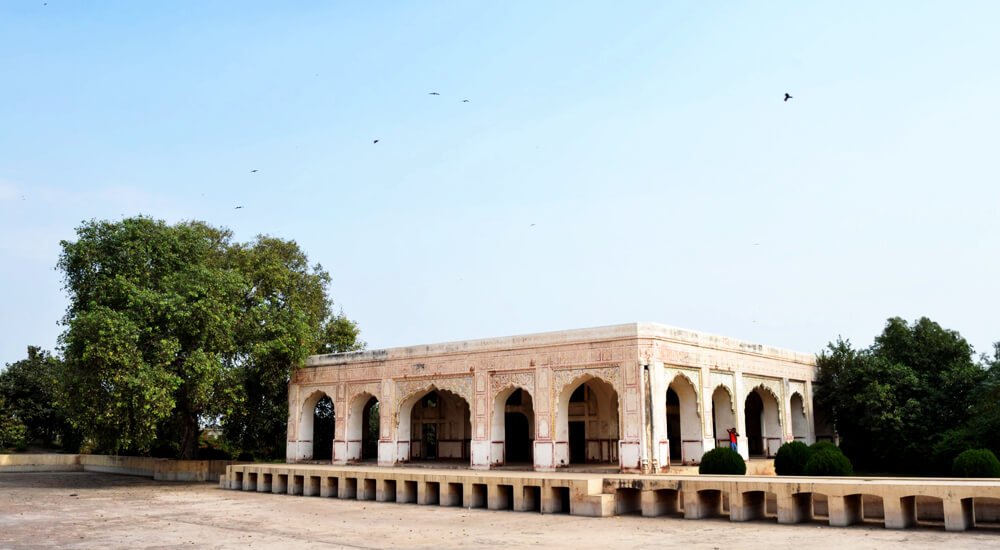
Kamran’s Baradari is a historic pavilion built in 1540 by Kamran Mirza, the son of Emperor Babur and brother of Humayun, in the 16th century.
It is located on the banks of the River Ravi in Lahore. Kamran’s Baradari is also considered the oldest Mughal structure in Lahore. It reflects Mughal architecture with its symmetrical arches and open design.
Tomb of Jahangir:

The Tomb of Jahangir is located in Shahdara Bagh, near Lahore. It was constructed in the 17th century for the Mughal Emperor Jahangir by his son, Shah Jahan.
The tomb features intricate marble inlay work, floral motifs, and serene gardens. It is a historical and architectural landmark, attracting visitors and historians alike.
Anarkali Bazaar:

Anarkali Bazaar is the oldest and most historic market in the city of Lahore. It features vibrant stalls offering goods such as jewelry, fabrics, aromatic spices, and handicrafts.
Exploring Anarkali Bazaar provides a fantastic experience where history merges with the vibrant energy of commerce. Tasting the local street food and bargaining are essential parts of the experience in Lahore.
Wagah Border:

The border crossing between Pakistan and India is the Wagah Border. It is famous for the daily flag ceremony performed by the Pakistan Rangers and the Indian Border Security Force.
The ceremony attracts large crowds and symbolizes the shared culture between the two nations. The Wagah Border offers a unique cultural experience and serves as a symbol of patriotism for visitors.
Begum Shahi Mosque:
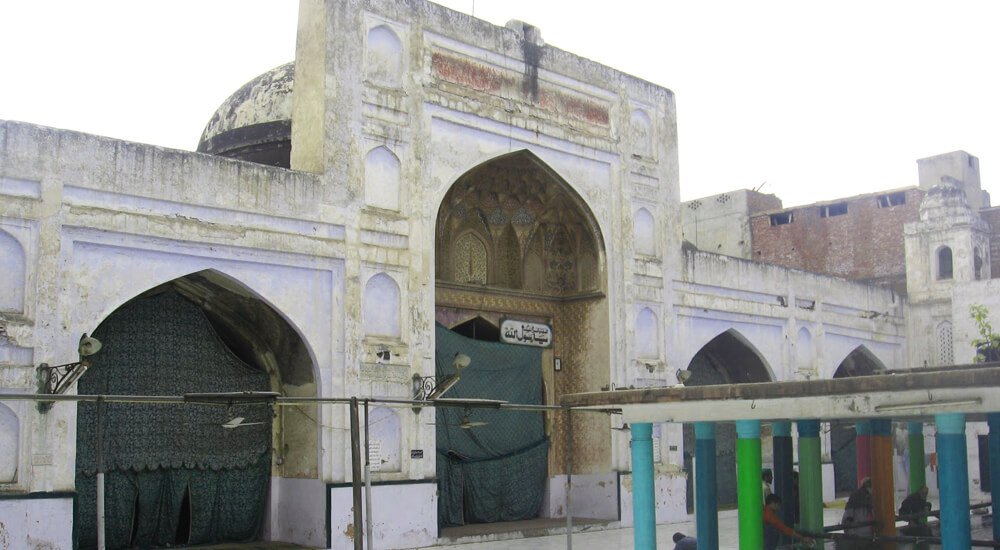
The Begum Shahi Mosque is a historic mosque located in Lahore, Pakistan. It was built between 1611 and 1614 during the reign of the Mughal Emperor Jahangir.
The mosque is also known as the Mariam-uz-Zamani Mosque. It is the oldest Mughal mosque in Lahore and showcases a blend of Persian and Mughal architectural styles. However, it is less well-known than the Badshahi Mosque.
Haveli Nau Nihal Singh:
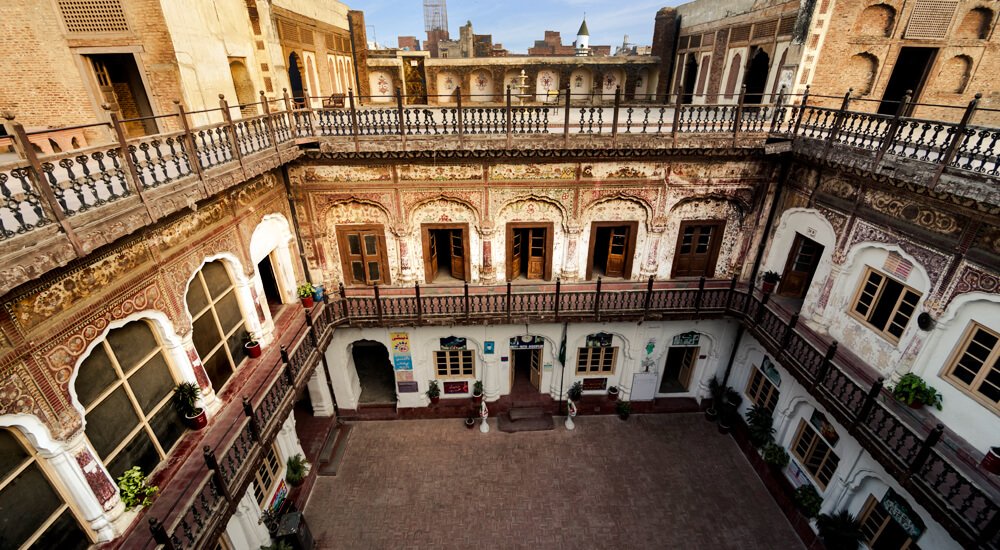
The Haveli of Nau Nihal Singh is a historical example of Sikh-era architecture located in the Walled City of Lahore, Pakistan. It was built in the mid-19th century and belonged to Nau Nihal Singh, the grandson of Maharaja Ranjit Singh.
The haveli is famous for its architectural design, intricate woodwork, and vibrant decorative motifs that reflect the significance of Sikh, Mughal, and Hindu design elements.
Heran Minar:
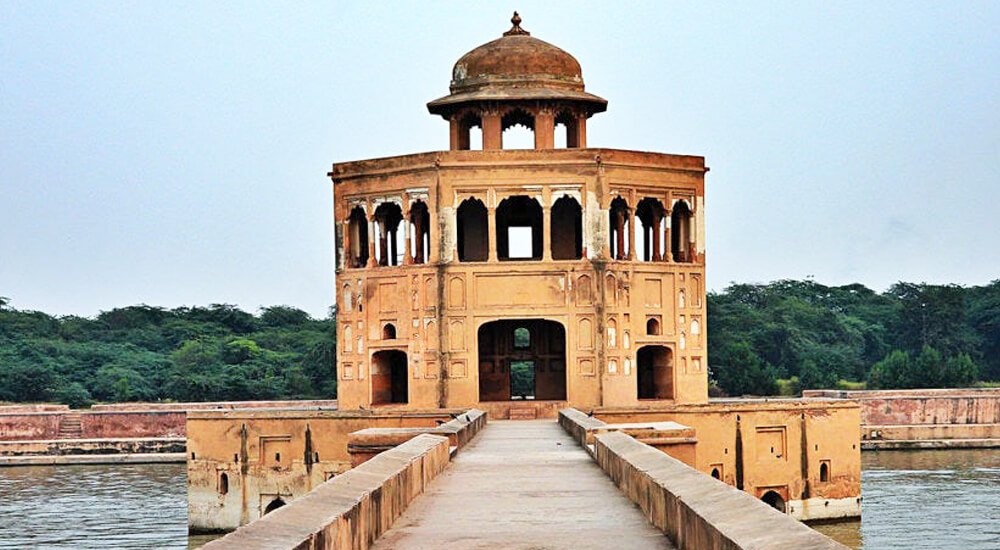
Hiran Minar is a historical monument built in the 17th century by the Mughal Emperor Jahangir. It is located in Sheikhupura, Punjab, Pakistan.
This minaret was constructed in memory of his beloved pet antelope, Mansraj. The complex includes a tall minaret surrounded by serene gardens and water features that reflect the Mughal architectural style.
National College of Arts (NCA):

The National College of Arts (NCA) is a cornerstone of Pakistan’s creative and artistic education. NCA has a rich history dating back to 1875 when it was founded as the Mayo School of Industrial Arts.
It promotes visual arts and fostering creativity in Lahore’s vibrant art scene. Visitors can indulge in exhibitions, workshops, and interactive sessions based on innovative artworks.
Rana Resort:
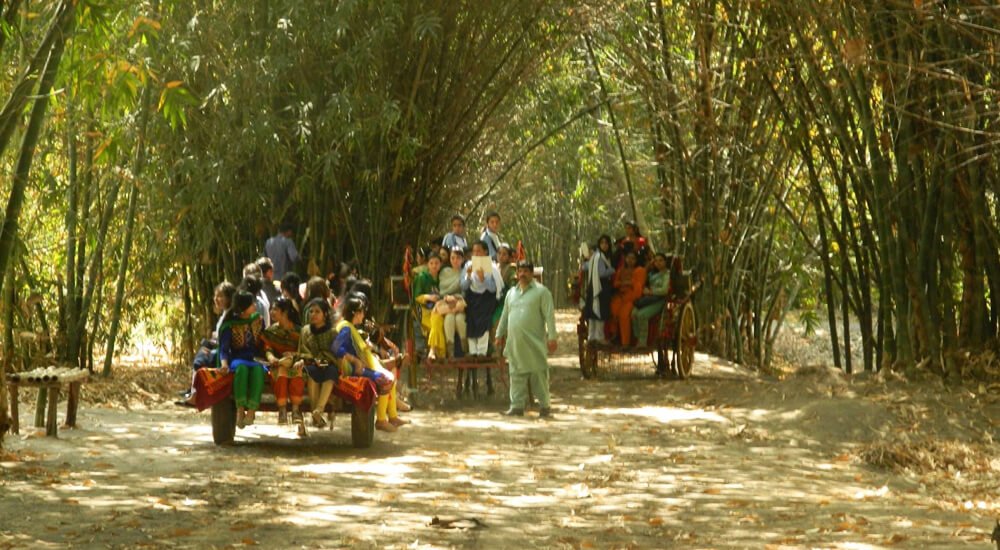
Rana Resort is situated 70 km from Lahore via Head Balloki Road. The resort is a luxurious safari park surrounded by lush green forest.
It offers a refreshing mix of natural beauty, adventure, and family-friendly fun within easy reach of Lahore.
Lawrence Garden:
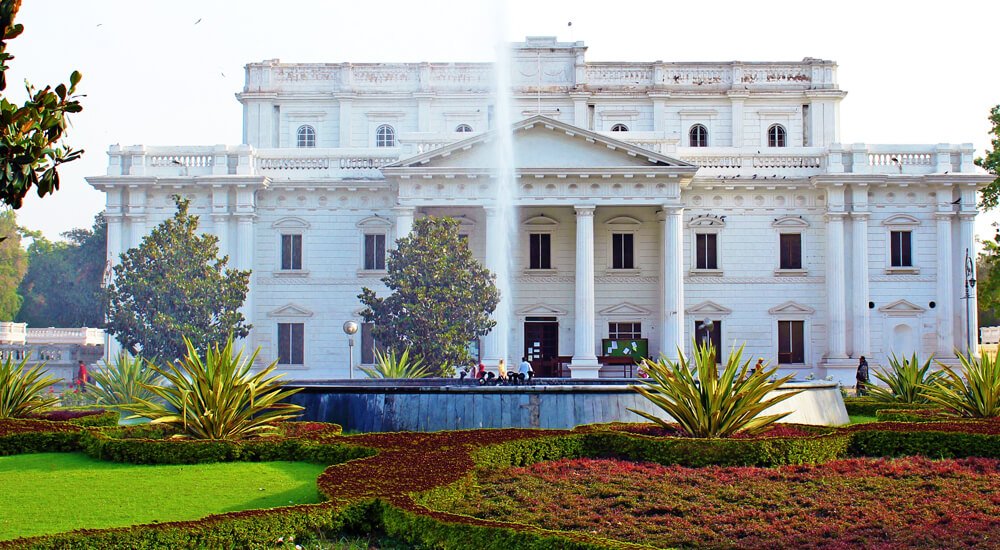
Bagh-e-Jinnah is known as Lawrence Gardens located in Lahore. It is a historic and beautifully maintained garden in Lahore. The garden features walking paths, variety of trees, library and sports activities.
After Pakistan independence in 1947, the garden was renamed Bagh-e-Jinnah in honor of Muhammad Ali Jinnah, the founder of the nation. It is a popular spot for leisure and recreation for visitor.
Tomb of Nadira Begum:

The Tomb of Nadra Begum is an ancient monument located in Lahore. It was built in the 17th century and reflects the significance of Mughal architectural style.
Nadra Begum was the wife of Prince Dara Shikoh, the eldest son of Emperor Shah Jahan. This structure holds significant historical and emotional value.
Safari Zoo:
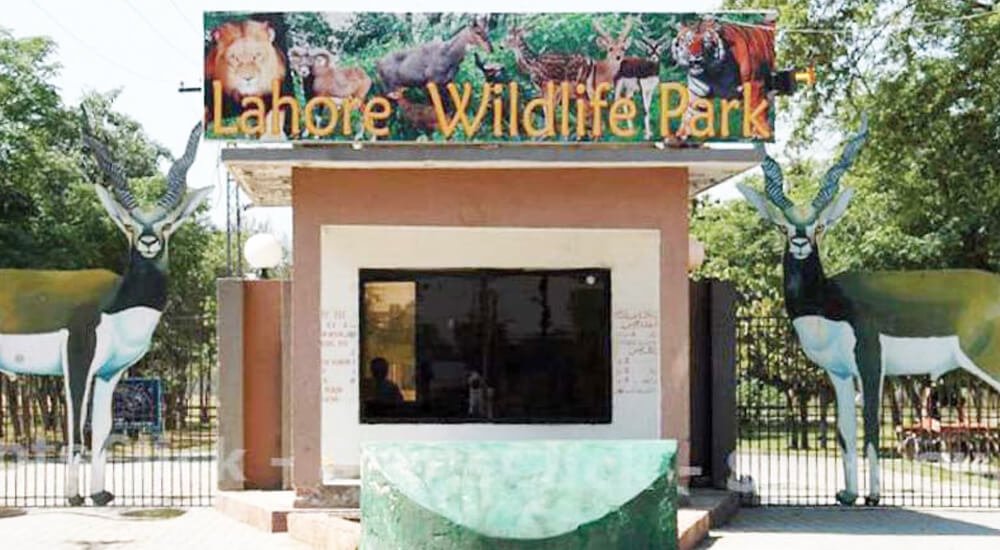
Safari Zoo is a famous wildlife park where a large number of animals live, allowing visitors to observe nature.
It is located in Raiwind road Lahore. It’s an exciting and educational outing activity for families and nature lovers.
Emporium Mall:
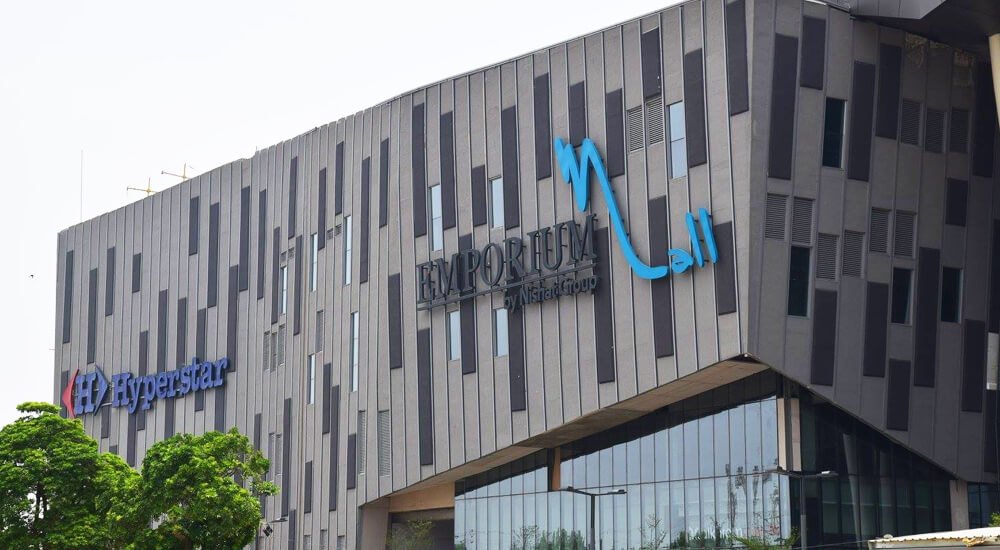
Emporium Mall is one of the most luxurious shopping malls in Lahore. Its Opened in 2016 by Nishat Group and considered the 2nd largest shopping mall in Pakistan.
Emporium Mall offers a wide variety of comprehensive retail, entertainment, and dining experience all under one roof.
Sufi Dhamal:
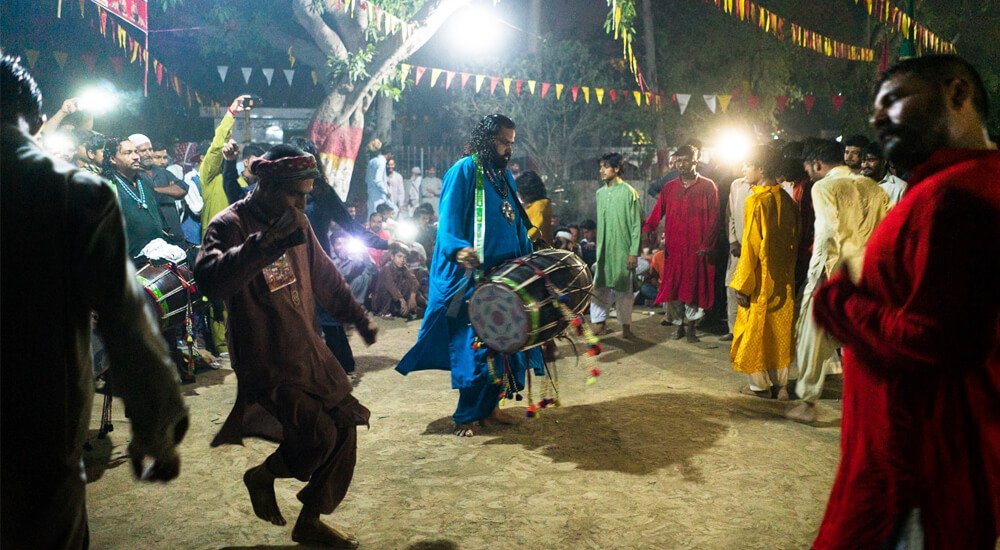
Sufi Dhamal is a soulful tradition in Lahore, mostly observed at the shrines of Sufi saints like Data Ganj Bakhsh and Shah Jamal.
Devotees gather to perform Dhamal to the loud beats of the dhol every Thursday night. In Lahore’s cultural history, Sufi Dhamal is a powerful symbol of spiritual devotion and the enduring legacy of Sufi mysticism.
Explore more: Lahore Tour Packages
Jallo Park:
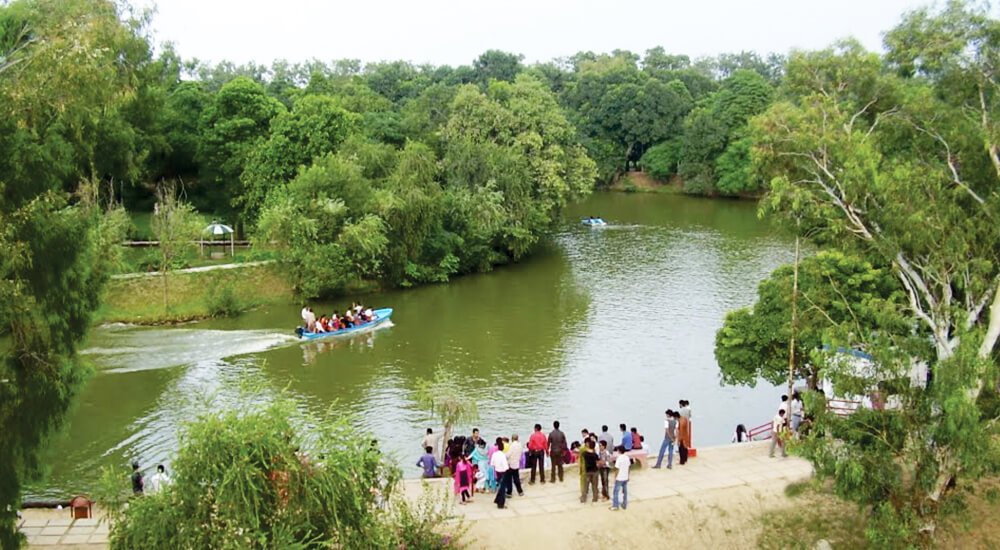
Jallo Park is a wildlife recreational park located in Lahore. It is also known as a botanical park. The park spans over 461 acres of green fields.
Established in 1978, Jallo Park offers a blend of public picnic areas, a wildlife breeding center, a botanical garden, a forest, a sports complex, and a lake for boating and fishing.
Chauburji:

Chauburji is a historic monument built in 1646 during the Mughal era. It is located in Lahore and served as the gateway to a grand garden laid out by Princess Zeb-un-Nisa, the daughter of Emperor Aurangzeb.
The structure is famous for its four minarets. Today, it showcases Lahore’s rich cultural and architectural heritage.
Haveli Dhyan Singh:
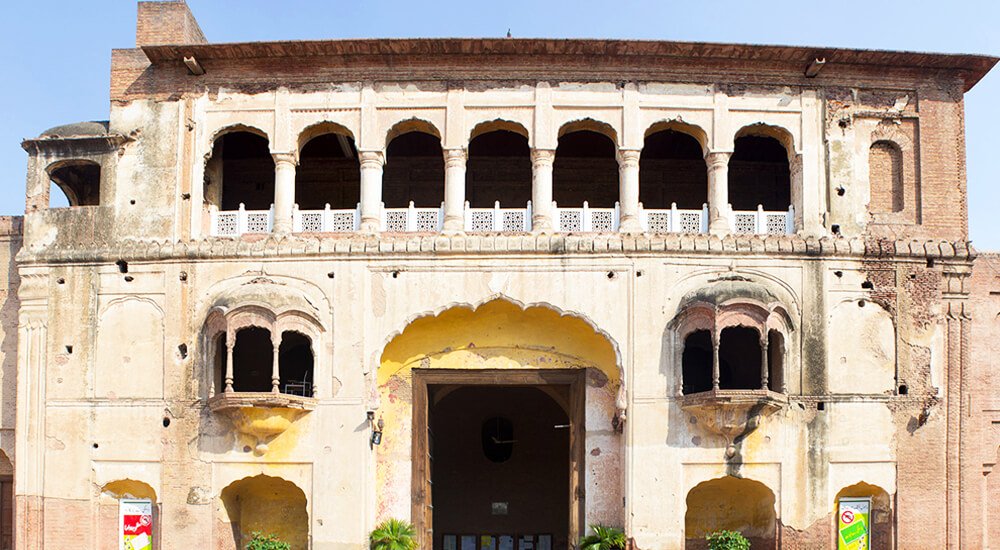
Haveli Dhyan Singh is an ancient haveli located in the Walled City of Lahore. The haveli, built in the 19th century, showcases a blend of traditional Sikh, Mughal, and colonial architectural elements.
It is a significant cultural landmark reflecting the grandeur and culture of the Sikh era in Lahore.
Maddho Lal Hussain:
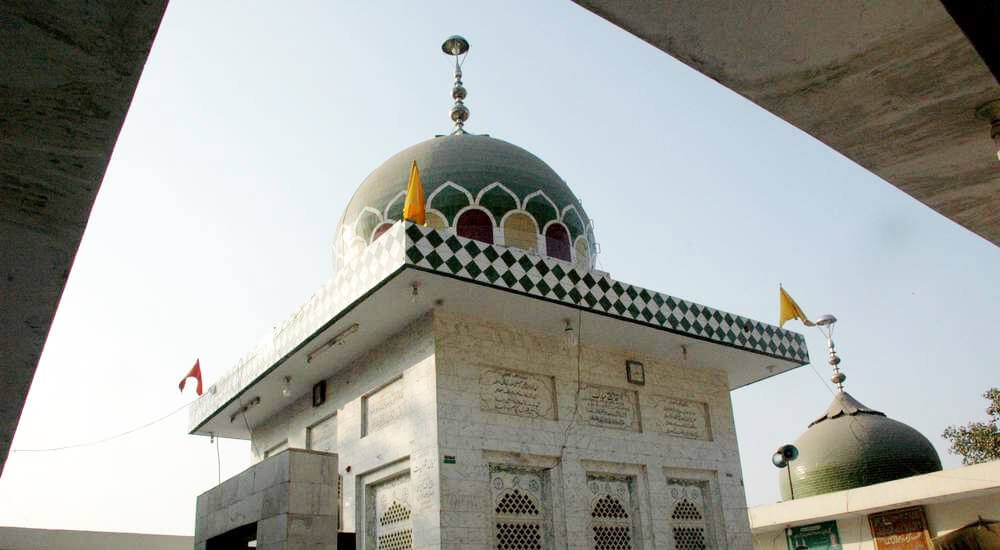
Maddho Lal Hussain was a Punjabi Sufi poet and saint in the 18th century. He originally belonged to Hinduism but later embraced Islam and became a disciple of the Sufi saint Shah Hussain.
He is famous for his poetry, which explores themes of divine love and human passion, reflecting the rich cultural and religious harmony of Punjab.
Pak Tea House:
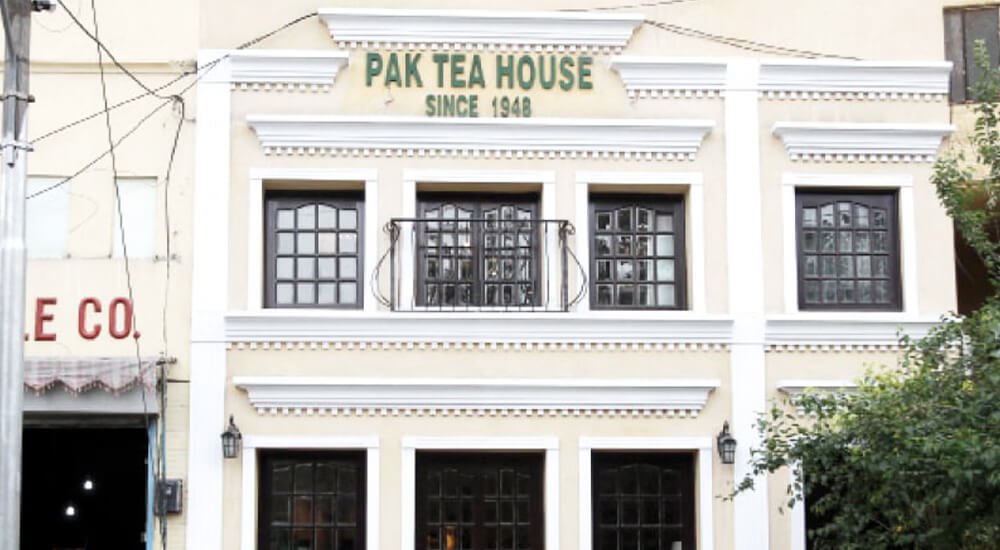
Pak Tea House is a historic café located in Lahore. The café was established in the 1940s and became known as a hub for poets, writers, and artists.
It was famous for hosting members of the Progressive Writers’ Movement, including Faiz Ahmed Faiz and Saadat Hasan Manto. After being closed for several years, Pak Tea House was reopened in 2013.
Shahdara Complex:

Shahdara Complex is a historical site located in Lahore along the bank of the Ravi River. This beautiful complex includes the tomb of Emperor Jahangir, his wife Empress Noor Jahan, and his brother-in-law Asif Khan.
It is famous for its gardens, marble work, and Mughal architecture. It now serves as a cultural heritage site that reflects the significance of the Mughal era.
Traditional Food Street:
Fort Road Food Street: Enjoy the beautifully restored area with rooftop Haveli restaurant behind the Badshahi Mosque. You’ll find from desi classics to Chinese and continental fare in a picturesque mughalera setting.
Gawalmandi Food Street: Known as Lahore desi food hub. Try the delicious cuisine like hareesa, fried fish, chana chaat, and legendary Feeka lassi from the old falooda stalls.
Lakshmi Chowk Food Street: Popular for its desi karahi dishes. You will try Butt Karahi and spicy gol gappay at Nisbat.
Old Anarkali Food Street: Scroll through the flavors of broast, falooda at Riaz Falooda, and sizzling barbecue in the historic Anarkali Bazaar
Asil Phajja Siri Paye: Beloved for a robust paya breakfast or goat brain curry near the Badshahi Mosque, this humble eatery is a true local gem
Khalifa Bakers: Khalifa Bakers is famous for its Nan Khatai (Khatai biscuits) established in 1925. It is a historic baker in Walled City of Lahore near Mochi Gate.

